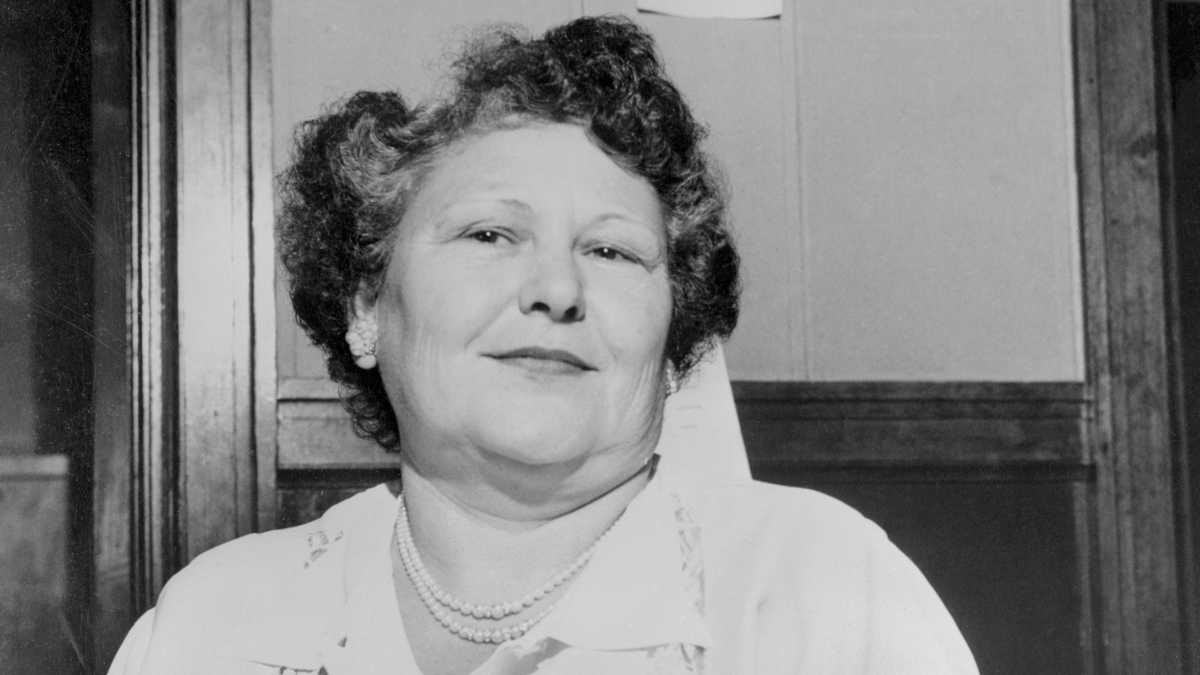
Who were the Collyer Brothers, and why are they remembered? The Collyer brothers, Homer and Langley, are infamous for their extreme hoarding and reclusive lifestyle in early 20th-century New York City. Born into wealth, they gradually withdrew from society, filling their Harlem brownstone with an astonishing 140 tons of clutter. Their story, marked by eccentricity and tragedy, captivated public attention when their bodies were discovered amidst the debris in 1947. Langley died from one of his own booby traps, while Homer succumbed to starvation. Their tale serves as a cautionary example of the dangers of hoarding and the impact of isolation.
Key Takeaways:
- The Collyer brothers, Homer and Langley, lived reclusive lives, hoarding massive amounts of items in their home. Their tragic story continues to captivate audiences with its blend of eccentricity and isolation.
- Despite their wealth, the Collyer brothers lived in poverty due to their hoarding behavior. Their tragic demise and the discovery of their bodies sparked a frenzy of public interest, leaving a lasting impact on culture and psychology.
The Collyer Brothers: A Tale of Eccentricity and Isolation
The Collyer brothers, Homer and Langley, are among the most infamous cases of hoarding and reclusive living in American history. Their story, which unfolded in the 1930s and 1940s, is a tragic tale of eccentricity, isolation, and ultimately, a tragic demise. Here are 38 key facts about the Collyer brothers:
-
Family Background: The Collyer brothers were born to Herman Collyer, a wealthy Manhattan gynecologist, and Susie Collyer, who came from a wealthy Hudson Valley family. Their parents were first cousins, which added to the family's eccentricity.
-
Early Life: The brothers grew up in a large brownstone at 2078 Fifth Avenue in Harlem, New York. They were fondly reared and trained to be gentlemen and scholars.
-
Homer’s Career: Homer became an admiralty lawyer, while Langley pursued a career in music, although he never achieved significant success as a concert pianist.
Withdrawal from Society and Hoarding Begins
In the 1930s, the brothers began to withdraw from society. Their behavior became increasingly eccentric, leading to a massive accumulation of items in their home.
-
Withdrawal from Society: The brothers stopped using the telephone in 1917 and gas and electricity in 1928, which simplified their lives according to Langley.
-
Hoarding Begins: The brothers started filling their home with newspapers, furniture, musical instruments, and assorted junk. This behavior escalated over the years, leading to a massive accumulation of items.
-
Media Attention: The brothers were first brought to public attention by Helen Worden Erskine, a reporter for the New York World-Telegram, in 1939. Erskine referred to them as the "Hermits of Harlem".
Life in Isolation
The Collyer brothers lived in complete isolation, largely oblivious to the significant demographic changes in Harlem. They stopped using public services and maintained their own self-contained world within their home.
-
Isolation: The brothers lived in complete isolation, largely oblivious to the significant demographic changes in Harlem. They stopped using public services and maintained their own self-contained world within their home.
-
Hoarding Accumulation: By 1947, the house was crammed with 140 tons of rubbish. This accumulation included thousands of books on medicine, numerous pianos, and other miscellaneous items.
-
Booby Traps: Langley constructed a maze of tunnels and booby traps to protect their home from intruders. These traps were designed to trigger by accidental movement, posing a significant risk to anyone entering the house.
Health Issues and Eccentric Beliefs
Homer's health deteriorated, and Langley's eccentric behavior became more pronounced. Their beliefs and actions further isolated them from the outside world.
-
Homer’s Health Issues: Homer became blind and crippled by arthritis. He was entirely dependent on his brother for care and food.
-
Special Diet: The brothers believed that a special diet of 100 oranges every week would restore Homer’s sight. This belief led them to reject medical treatment, fearing it would ruin their hopes for his recovery.
-
Langley’s Behavior: Langley was known for his eccentric behavior, including dragging a carton by a rope at night to collect items. He would often rummage through garbage cans and appeal to butchers and grocers for scraps.
Tragic Demise
The brothers' reclusive lifestyle and hoarding behavior ultimately led to their tragic deaths.
-
Death of Homer: Homer spent his final days in a room built out of garbage by Langley. He died of starvation-induced heart failure, ten hours before police arrived at the scene.
-
Death of Langley: Langley was crushed to death by a pile of newspapers triggered by one of his booby traps. His body was found buried 10 feet from where Homer had died.
-
Discovery of Bodies: The police found Homer’s emaciated corpse in an alcove amid piles of debris. The search for Langley revealed his body buried nearby, highlighting the tragic end to their reclusive lives.
Public Reaction and Legacy
The discovery of the Collyer brothers’ bodies sparked a frenzy of public interest. Their story continues to captivate audiences with its blend of tragedy and eccentricity.
-
Public Reaction: The discovery of the Collyer brothers’ bodies sparked a frenzy of public interest. The media coverage was extensive, with the story running as page-one news for weeks.
-
Auction of Items: After the brothers’ deaths, their belongings were auctioned off. The few items of value fetched only $1,800, highlighting the minimal worth of their extensive collection.
-
Legacy in Media: The Collyer brothers have been featured in various media, including documentaries, books, and even an episode of the TV show "911." Their story continues to captivate audiences with its blend of tragedy and eccentricity.
Cultural Impact and Psychological Analysis
The Collyer brothers' story has had a lasting impact on culture and has been the subject of various psychological analyses.
-
Cultural Impact: The phrase "Collyer's Mansion" has become a metaphor for extreme clutter and hoarding. It is often used to describe homes that are severely disorganized and pose significant health risks.
-
Historical Context: The brothers lived during a time of significant social change in Harlem. Their isolation and hoarding behavior reflect both their eccentric personalities and the changing urban landscape.
-
Psychological Analysis: The Collyer brothers’ behavior has been subject to various psychological analyses. Experts have discussed the psycholegal problems associated with hoarding, including health and zoning code violations, animal cruelty, and landlord-tenant disputes.
-
Forensic Mental Health: The case of the Collyer brothers has also been examined in the context of forensic mental health. Professionals have highlighted the potential role of forensic psychiatry in understanding and addressing hoarding behavior.
Public Perception and Community Reaction
The public perception of the Collyer brothers has been complex, with varying views on their lives and behavior.
-
Public Perception: The public perception of the Collyer brothers has been complex. While some view them as tragic figures, others see them as eccentric individuals who chose to live outside societal norms.
-
Neighborhood Impact: The Collyer brothers’ home became a neighborhood attraction. Children would often speculate about the contents of the house, with some believing that Langley lived with the decomposing cadavers of his family members.
-
Community Reaction: The community around the Collyer brothers was both fascinated and disturbed by their behavior. Neighbors would often see Langley rummaging through garbage cans, which added to the mystique surrounding the brothers.
Economic Factors and Health Risks
Despite their wealth, the Collyer brothers lived in poverty. Their hoarding behavior led to significant financial issues and health risks.
-
Economic Factors: Despite their wealth, the Collyer brothers lived in poverty. Their hoarding behavior led to significant financial issues, as they spent more on acquiring items than on maintaining their home or accessing basic services.
-
Health Risks: The hoarding behavior of the Collyer brothers posed significant health risks. The accumulation of trash and debris created an environment conducive to disease and injury.
-
Animal Welfare: The brothers’ home was also a sanctuary for cats. When the house was finally cleared, numerous cats were found, highlighting the neglect of animal welfare in their reclusive lives.
Historical Documentation and Literary Representations
The story of the Collyer brothers has been extensively documented and has inspired various literary works.
-
Historical Documentation: The story of the Collyer brothers has been extensively documented in historical records. Newspaper articles from the time provide detailed accounts of their lives and deaths.
-
Literary Representations: The Collyer brothers have been featured in various literary works. Authors like Joyce Carol Oates have written about their lives, exploring themes of isolation and eccentricity.
Educational Tool and Cultural Icon
The Collyer brothers' story is often used as an educational tool and has made them cultural icons.
-
Educational Tool: The story of the Collyer brothers is often used as an educational tool to teach children about the dangers of hoarding and the importance of maintaining a clean and organized living space.
-
Cultural Icon: The Collyer brothers have become cultural icons, symbolizing the extremes of human behavior. Their story continues to captivate audiences, inspiring both fascination and horror.
Architectural Significance and Community Commemoration
The Collyer brothers' home had architectural significance, and their community continues to commemorate their lives.
-
Architectural Significance: The brownstone where the Collyer brothers lived is significant architecturally. The house was a large, dilapidated structure that reflected the brothers’ eccentric lifestyle.
-
Demolition and Legacy: After the brothers’ deaths, the house was demolished. A small park and plaque were erected to commemorate their lives, serving as a reminder of their tragic story.
-
Community Commemoration: The community around the Collyer brothers has continued to commemorate their lives. The park and plaque serve as a tribute to their unique and tragic existence.
Psychological Insights and Media Frenzy
The Collyer brothers' behavior offers significant psychological insights and sparked a media frenzy upon the discovery of their bodies.
-
Psychological Insights: The Collyer brothers’ behavior offers significant psychological insights. Their hoarding behavior can be seen as a coping mechanism for their isolation and fear of the outside world.
-
Media Frenzy: The discovery of the Collyer brothers’ bodies sparked a media frenzy. The story was covered extensively in newspapers and magazines, reflecting the public’s fascination with their lives.
-
Enduring Legacy: The story of the Collyer brothers remains an enduring legacy in American history. Their tragic tale continues to captivate audiences, serving as a reminder of the complexities and extremes of human behavior.
The Collyer Brothers' Lasting Impact
The Collyer brothers' story is a haunting reminder of the extremes of human behavior. Their lives, marked by hoarding, isolation, and eccentricity, continue to fascinate and horrify. Living in a self-imposed prison of clutter, they became a symbol of the dangers of unchecked hoarding. Their tragic end, with Homer dying of starvation and Langley crushed by his own booby traps, underscores the peril of their lifestyle. The brothers' tale has left a lasting mark on popular culture, inspiring books, documentaries, and even TV shows. Their home, once a neighborhood curiosity, now serves as a cautionary tale. The Collyer brothers' legacy is a stark reminder of the importance of mental health and the risks of extreme isolation. Their story remains a powerful example of how far human eccentricity can go, leaving a lasting impact on American history.
Frequently Asked Questions
Was this page helpful?
Our commitment to delivering trustworthy and engaging content is at the heart of what we do. Each fact on our site is contributed by real users like you, bringing a wealth of diverse insights and information. To ensure the highest standards of accuracy and reliability, our dedicated editors meticulously review each submission. This process guarantees that the facts we share are not only fascinating but also credible. Trust in our commitment to quality and authenticity as you explore and learn with us.


